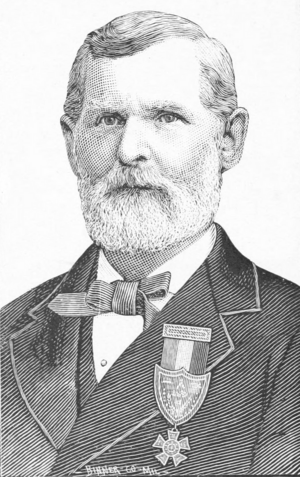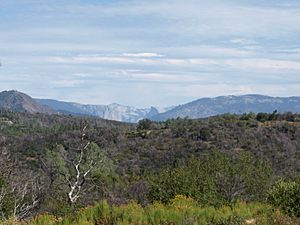Lafayette Bunnell facts for kids
Lafayette Houghton Bunnell (born March 13, 1824 – died July 21, 1903) was an American doctor, writer, and explorer. He is famous for being part of the Mariposa Battalion. This group was among the first non-Native Americans to explore Yosemite Valley. Bunnell also wrote a book called Discovery of the Yosemite and the Indian War of 1851. He is often given credit for naming Yosemite Valley. Bunnell also served as a soldier and doctor in the war with Mexico and the Civil War.
Contents
Lafayette Bunnell's Life Story
Early Life and Adventures
Lafayette Bunnell was born in Rochester, New York, on March 13, 1824. His father, Dr. Bradley Bunnell, was a doctor. His uncle, Dr. Douglass Houghton, was also a big influence. His uncle encouraged young Lafayette to seek adventure. He especially wanted to explore the "West."
In 1832, Bunnell's family moved to Detroit. On the way, they stopped in Buffalo. A serious sickness called cholera was spreading there. His father, Dr. Bradley Bunnell, helped treat the sick people. When they finally settled in Detroit, young Bunnell made friends. He played with Ojibwe, Potawatomi, and French-Canadian children. He went to a Catholic school. It was the best school in town.
Becoming a Doctor and Soldier
In 1845, Bunnell returned to Detroit. He continued studying medicine under Dr. Scoville. When the War with Mexico started, Bunnell joined the army. He worked as an orderly, helping in the hospital. For a time, he was in charge of a hospital in Cordova. He also led a medical team for a regiment. This was when they returned to Michigan after the war.
After leaving the army, Bunnell heard exciting news. President Polk confirmed that gold had been found in California. Bunnell decided to go west to find his fortune. He traveled across land through Texas and Mexico.
Discovering Yosemite Valley
In the winter of 1849–1850, Bunnell was exploring. He was on a trail near the Merced River. He saw huge rocky peaks of the Sierra Nevada mountains. In the distance, a massive cliff stood tall. It looked like it reached the top of the mountains. Bunnell had seen wild nature before. But this amazing cliff filled him with wonder. He asked people about the area. Few miners had noticed anything special about it.
In 1851, Bunnell joined the Mariposa Battalion. This group became the first non-indigenous people to explore Yosemite Valley. Their main goal was not discovery. The Battalion was looking for Native American tribal leaders. These leaders were involved in recent raids on American settlements.
Bunnell explored the Valley and named many of its features. He wrote a book about his experiences. It was called Discovery of the Yosemite, and the Indian war of 1851. This book was published in 1880. Most of what we know about Chief Tenaya and the Ahwahnechee tribe comes from Bunnell's writings. He was the first person to meet Chief Tenaya and then write a book about it.
Later Life and Legacy
Bunnell later served as a surgeon in the American Civil War. After the war, he moved to Homer, Minnesota. There, he married Sarah Smith. He practiced medicine a little. But mostly, he lived on his army pensions. He also wrote histories about the upper Mississippi River. Lafayette Bunnell died in Homer on July 21, 1903.
Bunnell's Legacy
Bunnell Point is located at the east end of Little Yosemite Valley. This point is named in his honor.




